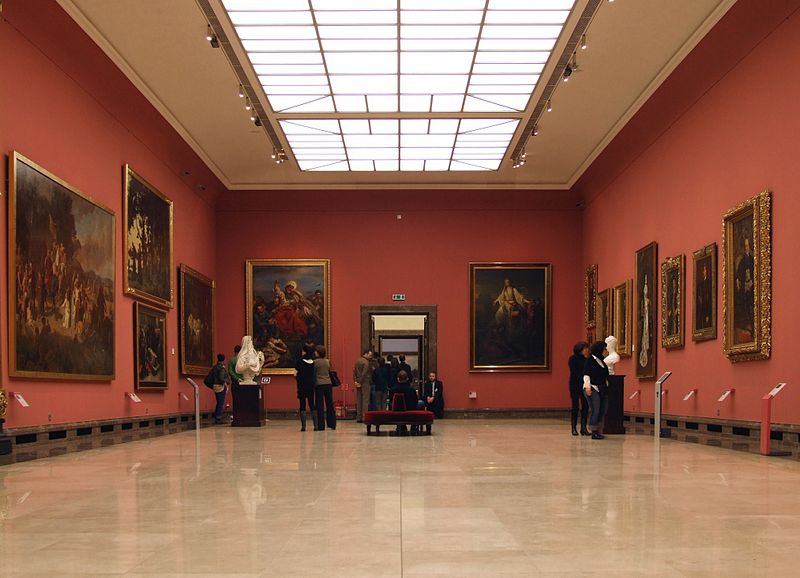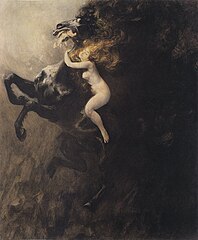Social program
None occupation including engineers and scientists (maybe it refers especially to them) can fill all day with professional activities only.
Therefore apart from keynote speeches, regular and special sessions, industry day and workshops we propose a social program including:
Welcome reception(September 18, 2012)
Venue: Sukiennice, National Museum (Gallery of Art, 1st floor)
Address: Rynek Główny 1 (Main Market Square 1)
See details on ETFA 2012 map
The Welcome Reception will be held in the Gallery of Art in Sukiennice at the “Rynek Główny” (Main Market Square). The “Rynek Główny” is a central place of the Old Town in Kraków and the largest medieval town square in Europe. It is surrounded by many historical buildings including the St. Mary’s Basilica, the Gothic church with two 80m high towers. Every hour a trumpet signal called the “hejnał mariacki” is played from the top of the taller of St. Mary's two towers.
The center of the square is dominatedby the Renaissance Sukiennice (the Cloth Hall). The Sukiennice is one of the city's most recognizable buildings. In past centuries it served as a major center of international trade. Now it hosts among others as a branch of National Museum comprising The Gallery of the 19th-century Polish Art.
From the balcony in Sukiennice you can admire the impressive panorama of the Main Market Square and towers of St. Mary’s Basilica. Some of you may know this view from tv reports on EURO 2012 because many tv stations installed their live studio on this balcony during European Football Championship EURO 2012. Although no EURO 2012 football match was played in Krakow, three national football teams (England, Italy and Nederland) have chosen Kraków as their residence for their stay in Poland during EURO 2012. And English team resides in Hotel Stary just near the Main Marker Square. By the way, some English journalists worried if the “hejnał mariacki” played every hour even in the night does not disturb the sleep of football players …
The arrangement of the Gallery of Art in Sukiennice resembles the 19th-century salon with some modern accents - touch-sensitive screens allowing visitors to learn the history of collection. Also the screens give some entertainment like playing games and quizzes.
Enjoy snacks, drinks and conversation with your colleagues in this unique place!
Gala dinner (September 19, 2012)
Venue - Wieliczka Salt Mine - "Warszawa" Chamber
Address: Wieliczka, 10 Daniłowicza Street
Venue - Wieliczka Salt Mine - "Warszawa" Chamber
Address: Wieliczka, 10 Daniłowicza Street
The bus transportation will be organized for ETFA 2012 participants and guests.
The dinner will be preceded by one-hour guided underground tour to see most beautiful salt art objects, caves and chapel (Tourist Route)
See details on ETFA 2012 map
See details on ETFA 2012 map


Salt is one of the oldest, most ubiquitous food seasonings and moreover, salting is an important method of food preservation. The taste of salt (saltiness) is one of the basic human tastes. While people have used canning and artificial refrigeration to preserve food for the last hundred years or so, salt has been the best-known food preservative for many thousands of years especially for meat.
The production of salt from salted springs has been practiced in Wieliczka region since prehistoric times. Subterranean exploitation began in the13th century and production of table salt was continued almost seamlessly until 2007 making Wieliczka Salt Mine world's oldest mine still in operation. Below a quote from the statement of significance of UNESCO Committee Advisory Board evaluation justifying the inclusion the Wieliczka Salt Mine into the first World Heritage Sites List (1978):
"The salt mine in Wieliczka is a unique development in the history of mining, because the rock salt deposits were mined without interruption from the 13th to the end of the 20th centuries. The scale of excavation in this mine is very large, with corridors, galleries, and chambers, as well as underground lakes, totalling more than 200km in length on seven levels between 57m and 198m below ground. The largest collection of original tools and mining equipment illustrating the development of mining technology from the Middle Ages to modern times has been preserved here" (our note - actually the mine levels range down to 327m, while the deepest level available to tourists is 135 meters below ground).
In 2007, the readers of "Rzeczpospolita", a polish daily newspaper, have chosen Wieliczka Salt Mine as the most beautiful among 7 Poland's Miracles in the poll conducted in 2007. Over million of people visit Wieliczka Salt Mine every year.
Although almost everything in the Mine (i.e. dozens of statues, an entire chapel carved out of the salt rock and even the crystals of the chandeliers made from dissolved and re-crystallized salt!) is salty, some sweet refreshments will be served during gala dinner :-).
A fascinating pilgrimage into the past of a major industrial undertaking. Really unique environment - beside beautiful views and specific microclimate including constant temperature, high humidity with concentration of sodium chloride and other healing chemical elements, some caves have exceptional acoustics - sometimes referred as the best one in Europe.
Participation in both aforementioned events is included in the standard registration fee













